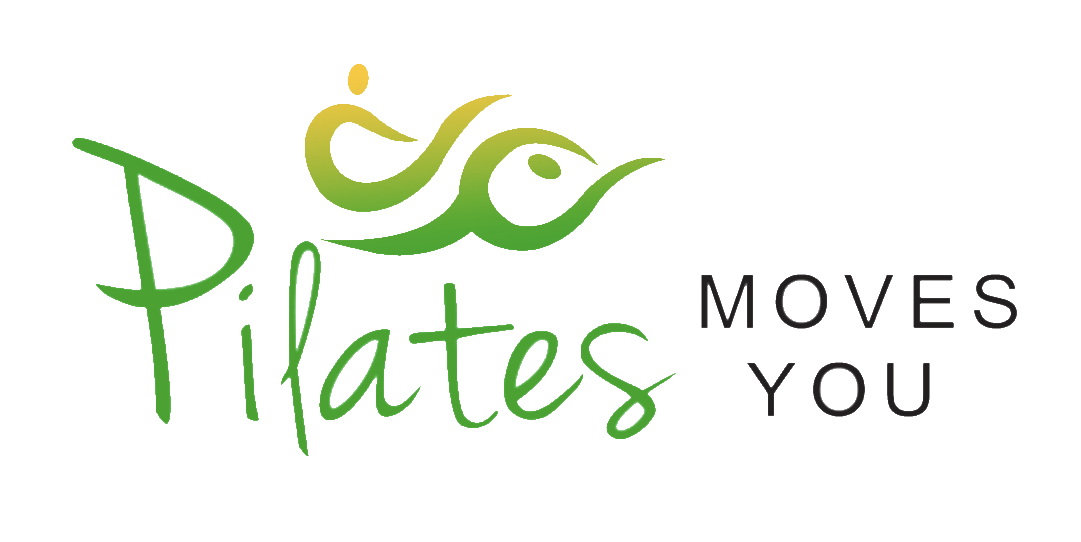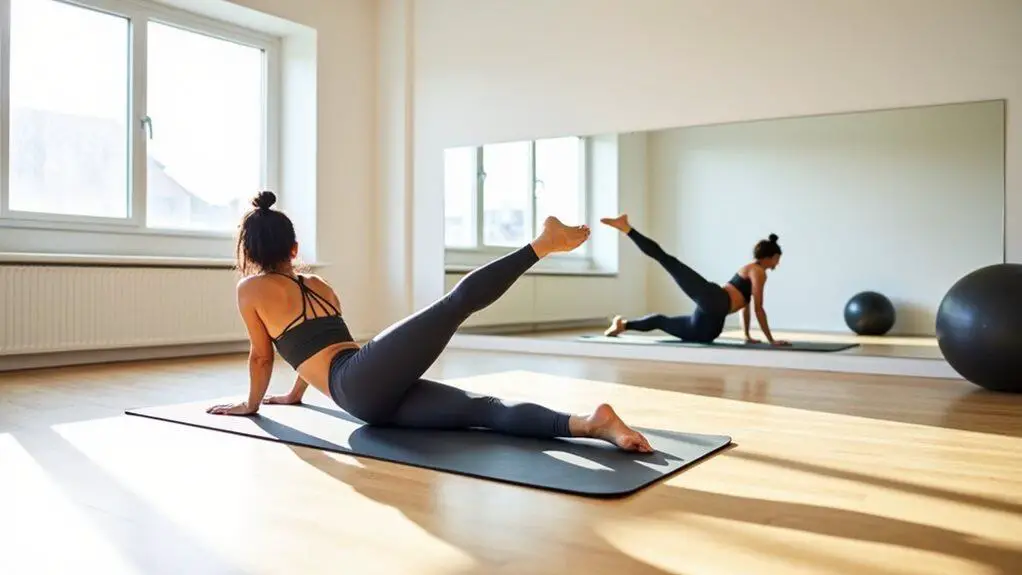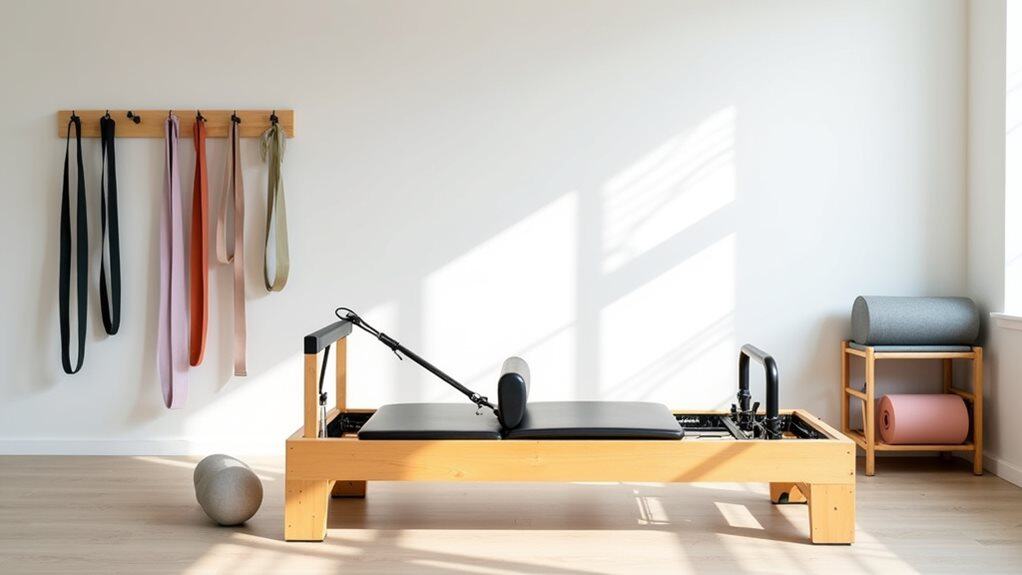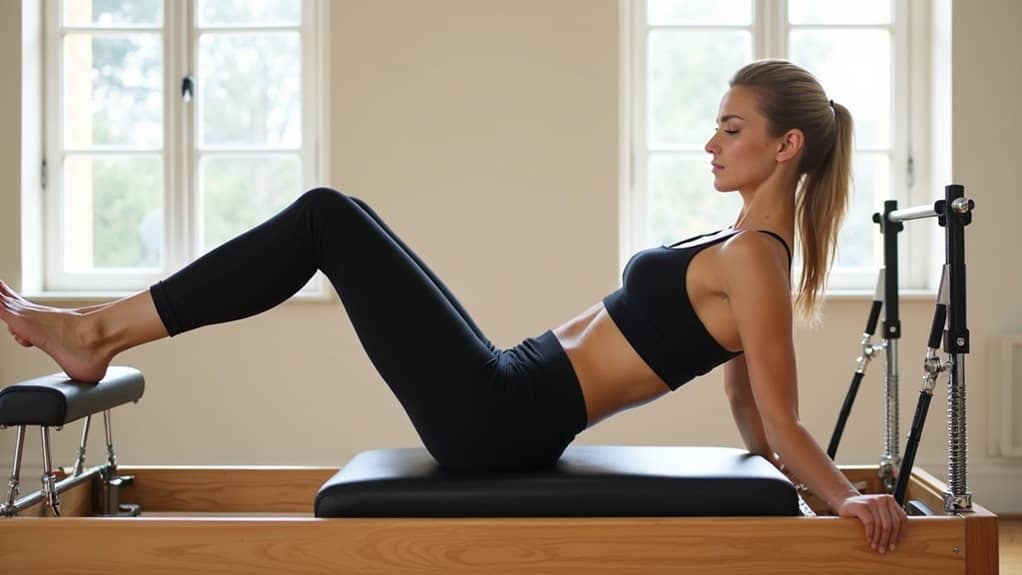Are you tired of doing endless crunches and sit-ups in an attempt to strengthen your abs? If so, it’s time to switch up your routine and try incorporating a Pilates ring into your workout.
To use a Pilates ring for abs, place the ring between your thighs and lie on your back with your knees bent. Place your hands behind your head and lift your head and shoulders off the ground. Squeeze the ring with your thighs and lower your head and shoulders back down. Repeat for several repetitions.
The resistance of the ring engages your core muscles, making it an effective exercise for toning and strengthening your abs.
Not only does the Pilates ring provide resistance for your ab muscles, but it also engages other muscles in your body, such as your arms and legs, to create a full-body workout.
With a little practice and guidance, you can use the Pilates ring to tone and sculpt your abs, while also improving your overall strength and flexibility. So, let’s dive in and explore how you can use the Pilates ring for a killer ab workout.
Introduction to the Pilates Ring
Get ready to learn all about this amazing piece of equipment that can help you achieve a stronger core and improve your overall fitness level! The Pilates ring, also known as the magic circle or the fitness circle, is a versatile tool used to target specific muscle groups, particularly in the abs.
The benefits of using a Pilates ring are numerous. It can help improve your posture, strengthen your core, and tone your abs. The ring can also be used to work other body parts such as the arms, legs, and back. With regular use, the Pilates ring can help you achieve better balance, flexibility, and overall fitness.
To get the most out of your Pilates ring, it’s important to learn proper technique and form. There are numerous Pilates ring exercises that can be done to target the abs, including the classic Pilates hundred, seated twist, and leg circles. However, it’s important to consult with a certified Pilates instructor or fitness professional to ensure that you’re using the ring correctly and safely.
Now that you know the benefits of using a Pilates ring and some of the exercises you can do, it’s time to choose the right one for you. Consider factors such as the material, size, and resistance level when selecting a Pilates ring. A good quality ring should be durable, comfortable to hold, and provide enough resistance to challenge your muscles.
With the right Pilates ring, you can take your abs workout to the next level and achieve your fitness goals!
Choosing the Right Pilates Ring
When it comes to choosing the right Pilates ring, there are a few key points you should consider. Firstly, there are different types of Pilates rings available, including those made from metal, foam, or rubber.
Secondly, you’ll need to think about your own personal preferences and needs, such as the level of resistance you require and any specific features you’re looking for.
Finally, it’s important to choose a Pilates ring that is high quality and durable, so you can be sure it will last through many workouts.
Different Types of Pilates Rings
The variety of Pilates rings available can be likened to a garden full of flowers, each with their own unique beauty and purpose. As a Pilates enthusiast, you may be familiar with the traditional rubber-coated metal ring, but there are several other types of Pilates rings available on the market.
Here are some different types of Pilates rings you may come across:
- Foam-covered Pilates rings: These are perfect for those who are looking for a more comfortable grip.
- Double-handled Pilates rings: These rings are designed for people who need more support and stability during their Pilates routine.
- Soft-grip Pilates rings: These rings are designed with a soft, foam-like material that provides a more comfortable grip.
- Travel Pilates rings: These rings are smaller and more lightweight, making them perfect for those who want to take their Pilates practice on-the-go.
- Magic circles: These are the original Pilates rings, made with a metal frame and rubber coating.
When choosing a Pilates ring, it’s important to consider factors such as the benefits and limitations of each type, as well as your personal preferences and needs. Now that you know about the different types of Pilates rings available, let’s dive into the factors you should consider before choosing one for your Pilates routine.
Factors to Consider When Choosing a Pilates Ring
Before choosing a Pilates ring, it’s important to consider factors such as your fitness goals, body type, and preferred level of resistance. Quality vs. price should also be taken into account. You don’t want to sacrifice quality for a cheaper price, as it may not last as long and may not provide the level of resistance you need.
Material vs. durability is another factor to consider. A ring made of high-quality materials may cost more but will likely last longer and provide better resistance over time.
When choosing a Pilates ring, it’s important to find one that suits your needs and goals. Whether you’re a beginner or advanced practitioner, there are Pilates rings available that can provide the level of resistance and durability you need.
Once you’ve chosen your ring, it’s time to prepare for your Pilates ring ab workout.
Preparing for Your Pilates Ring Ab Workout
Get ready for your core-focused Pilates workout by warming up and stretching your muscles. Proper posture is key when preparing for any Pilates exercise, including those targeting your abs.
Stand up straight with your shoulders relaxed and your feet hip-width apart. Engage your core muscles by pulling your navel toward your spine and keeping your back straight.
Breathing techniques are also important in preparing for your Pilates ring ab workout. Take deep breaths in through your nose and exhale through your mouth, focusing on contracting your abdominal muscles as you exhale. This will help you engage your core and get the most out of your workout.
Before starting any specific exercises, take a few minutes to stretch your abs and back muscles. This will help prevent injury and ensure that your muscles are ready to work.
Try a few gentle twists and stretches, such as lying on your back and pulling your knees to your chest or reaching your arms above your head and stretching your whole body.
Now that you’re warmed up and ready to go, let’s dive into some basic Pilates ring ab exercises.
Basic Pilates Ring Ab Exercises
Ready to work your core? Let’s dive into these basic ab exercises using a Pilates ring. Did you know that strengthening your core can improve your posture and reduce back pain? Get ready to challenge your abs with these Pilates ring modifications designed to target your entire core.
-
Seated Ring Squeeze: Sit on the floor with your knees bent and feet flat. Hold the ring between your hands with your arms extended in front of you. As you exhale, squeeze the ring and bring your elbows towards your knees. Inhale and release back to starting position.
-
Ring Leg Lifts: Lie on your back with your knees bent and feet flat on the floor. Hold the ring between your ankles and lift your legs towards the ceiling. Exhale and lower your legs towards the floor, squeezing the ring to engage your core. Inhale and lift your legs back up to starting position.
-
Ring Crunches: Lie on your back with your knees bent and feet flat on the floor. Hold the ring behind your head with your elbows out to the sides. Exhale and lift your head and shoulders off the floor, squeezing the ring as you crunch. Inhale and lower back to starting position.
-
Ring Bicycle: Lie on your back with your knees bent and feet flat on the floor. Hold the ring with both hands behind your head. Lift your head and shoulders off the floor and bring your left elbow towards your right knee as you extend your left leg out straight. Switch sides and continue alternating for a full set.
Take on these Pilates ring ab challenges and feel the burn in your core. These basic exercises are just the beginning – stay tuned for intermediate Pilates ring ab exercises to take your core workout to the next level.
Intermediate Pilates Ring Ab Exercises
Get ready to take your Pilates ring ab workout to the next level with these intermediate exercises.
First up are Ring Bicycle Crunches, which will challenge your core stability as you twist and crunch.
Next, try Ring Leg Raises to target your lower abs and improve your hip mobility.
And finally, add Ring Side Planks to your routine to strengthen your obliques and improve your balance.
With these exercises, you’ll be well on your way to a stronger, more toned core.
Ring Bicycle Crunches
The Ring Bicycle Crunches work the core muscles while engaging the Pilates ring to add resistance and challenge. This exercise is perfect for intermediate level Pilates practitioners who are looking to take their core workout to the next level.
To perform this exercise, follow these steps:
- Lie on your back with the Pilates ring placed between your knees
- Lift your head, neck, and shoulders off the ground and place your hands behind your head
- Bring your right elbow to your left knee while extending your right leg out
- Switch sides, bringing your left elbow to your right knee while extending your left leg out
- Continue alternating sides for a set number of repetitions
The Ring Bicycle Crunches are an excellent way to target your obliques and improve your balance and stability. Incorporate this exercise into your routine alongside other Pilates ring ab exercises like Ring Oblique Twists and Ring Reverse Crunches.
Next up, we’ll dive into Ring Leg Raises, another challenging exercise that’ll help you get the most out of your Pilates ring workout.
Ring Leg Raises
If you’re ready to take your core workout to the next level, the Ring Leg Raises are a must-try exercise that’ll challenge your muscles and improve your balance.
To perform this exercise, lie on your back with your legs straight and your feet flexed. Hold the pilates ring with both hands and place it between your ankles.
Inhale deeply and as you exhale, lift your legs up towards the ceiling while squeezing the ring between your ankles. Hold for a few seconds before slowly lowering your legs back down to the starting position. Repeat for 10-15 reps.
There are variations to this exercise that can make it more challenging. You can try lifting your legs at different angles, or even holding the ring with just one foot while the other leg is extended.
The benefits of Ring Leg Raises include strengthening your abs, hip flexors, and inner thighs. It also helps to improve your balance and stability.
Now, let’s move onto the next exercise – ring side planks.
Ring Side Planks
Take your core workout up a notch with Ring Side Planks, incorporating the Pilates ring into traditional ab exercises. Ring side plank variations are an excellent way to challenge your stability and strength while focusing on your obliques.
To perform a ring side plank, start by positioning yourself on your side, with your elbow directly under your shoulder and your feet stacked on top of each other. Place the Pilates ring between your thighs, squeezing it tightly to engage your inner thighs and glutes.
From this position, lift your hips off the ground, keeping your body in a straight line from head to heels. Hold the position for a few seconds, then lower your hips back down to the ground. Repeat for several reps, then switch to the other side.
As you get stronger, you can try different variations of the ring side plank, such as lifting your top leg or arm, or bringing your top knee towards your chest and extending it out again.
Incorporating ring side planks into your routine is a great way to challenge your abs and build core strength. But if you’re ready for an even greater challenge, keep reading for advanced Pilates ring ab exercises that will take your workout to the next level.
Advanced Pilates Ring Ab Exercises
Feeling like a fitness guru? Jolt your core routine with these expert-level Pilates Ring abdominal exercises. With the right form and technique, you’ll engage your abs to the max and feel the burn in no time.
Here are some advanced Pilates Ring ab exercises that will take your core strength to the next level:
-
Pilates Ring Crunches: Start by lying on your back with your knees bent and feet flat on the ground. Hold the Pilates Ring between your hands and extend your arms over your chest. As you exhale, lift your shoulders off the ground and squeeze the Ring with your hands. Lower back down to the starting position and repeat for 10-15 reps.
-
Pilates Ring Teasers: Sit on the ground with your knees bent and feet flat on the ground. Hold the Pilates Ring with both hands and extend your arms overhead. As you lift your feet off the ground, simultaneously lift the Ring and reach it towards your toes. Lower back down to the starting position and repeat for 10-15 reps.
-
Pilates Ring Plank with Knee Tucks: Start in a plank position with your hands on the Pilates Ring and your feet hip-width apart. Engage your core and bring your right knee towards your chest, tapping the Ring with your knee. Return to the plank position and repeat with your left knee. Continue alternating for 10-15 reps on each side.
Remember to listen to your body and modify or adjust as needed. These exercises can be challenging, but with practice, you’ll feel stronger and more confident in your Pilates practice.
Ready to add these advanced Pilates Ring ab exercises to your routine? Stay tuned for our next section on creating a Pilates Ring ab workout routine that’ll help you incorporate these exercises into a full-body workout.
Pilates Ring Ab Workout Routine
Get ready to take your core strength to the next level with this Pilates Ring ab workout routine that’ll challenge your muscles and leave you feeling stronger and more confident in your fitness practice.
To begin, start with a warm-up that includes a few minutes of light cardio to get your blood flowing. Once you’re warmed up, grab your Pilates Ring and get ready to work your abs!
Start with the basic Pilates Ring squeeze exercise. Lie on your back with your knees bent and feet flat on the floor. Place the Pilates Ring between your thighs and squeeze it as you lift your legs up towards the ceiling. Hold for a few seconds, then slowly lower your legs back down to the starting position. Repeat for 10-15 reps. This exercise works your entire core, including your lower abs.
Next, try the Pilates Ring bicycle exercise. Lie on your back with your hands behind your head and your legs in a tabletop position. Place the Pilates Ring between your thighs and squeeze it as you twist your torso to bring your right elbow towards your left knee. Switch sides and bring your left elbow towards your right knee while squeezing the Pilates Ring. Continue alternating sides for 10-15 reps. This exercise targets your obliques, or side abs, and helps to create a defined waistline.
Effective modifications and proper form are key to getting the most out of your Pilates Ring ab workout routine. If you’re a beginner, start with the basic exercises and work your way up to more advanced moves. Focus on maintaining proper form throughout each exercise, and don’t be afraid to modify as needed to avoid injury.
With consistent practice, you’ll build strong, toned abs that’ll support your overall fitness goals.
As you wrap up your Pilates Ring ab workout routine, remember to take a few minutes to stretch and cool down. This’ll help to prevent muscle soreness and injury.
Incorporating regular Pilates Ring ab workouts into your fitness routine can help you to build a strong core and improve your overall physical health. Keep challenging yourself with new exercises and variations to continue seeing progress in your fitness practice.
Conclusion and Final Thoughts
Now that you’ve learned about a Pilates ring ab workout routine, let’s discuss the benefits of using a Pilates ring and some tips for incorporating it into your workout routine.
Using a Pilates ring can provide a challenging resistance to your ab exercises, helping to strengthen and tone your core muscles. Additionally, the ring can be used for a variety of exercises, not just those targeting the abs, making it a versatile piece of equipment.
To incorporate the Pilates ring into your ab workout routine, start by selecting a few exercises that you’re familiar with, and then add in the ring for an extra challenge. It’s important to remember to use proper form and technique, and not to overdo it, as using too much resistance can lead to injury.
When you’ve completed your Pilates Ring ab workout you’ll feel great. You’re proud of yourself for sticking with it and working hard to achieve your fitness goals.
But here’s the ironic twist: as much as you’ve worked your abs, your six-pack won’t magically appear overnight. In fact, it may take weeks or even months of consistent Pilates Ring workouts before you see any visible changes.
But don’t let that discourage you! The journey to a stronger, leaner core is a process, and every time you pick up that Pilates Ring, you’re one step closer.
So keep at it, stay consistent, and remember that the real reward is not just a toned midsection, but a healthier, happier you. Happy ringing!




